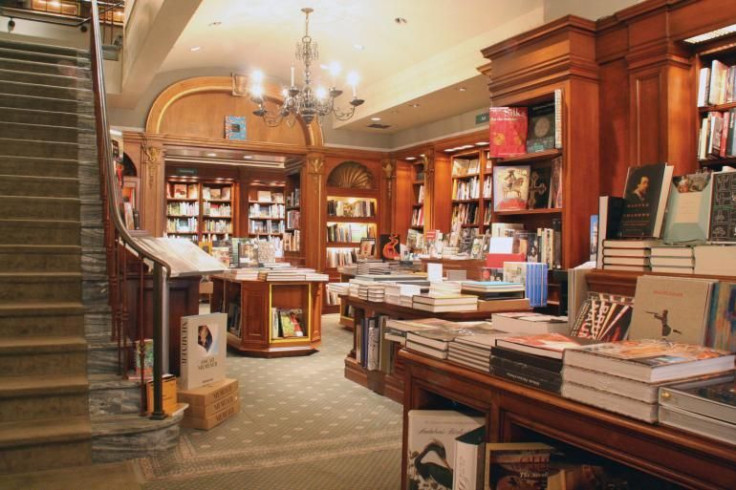Rizzoli Bookstore Building Determined Ineligible For Interior Landmark Protection, Despite Pleas From Thousands
Few remaining elements from the original interior design remain, according to NYC's Landmarks Preservation Commission

In yet another blow to the thousands of preservation advocates fighting tooth and nail to save New York City’s Rizzoli Bookstore, the building that houses the bookstore doesn’t meet the requirement for interior landmark protection, according to the city’s Landmarks Preservation Commission.
The determination, announced on Thursday, follows months of impassioned appeals from preservationists, city officials and New Yorkers who live and work near Manhattan’s rapidly changing West 57th Street, and who have been rallying to save the century-old building, which is presumed to be facing demolition to make way for yet another glass skyscraper. More than 16,000 people have signed a petition in an effort to save the charming, six-story property located at 31 West 57th Street, where Rizzoli Bookstore has been since 1985. The bookstore is set to close its doors for good on Friday, when a rally arranged by Manhattan Community Board Five is scheduled for 10 a.m. EDT outside the building.
But from the looks of things, it may already be too late. According to a representative for the LPC, a review of the interior conducted by Robert Tierney, chairman of the commission, and the commission’s executive staff, found that few remnants of the building’s original interior design remain intact. Preservation advocates, including Manhattan Borough President Gale Brewer, had hoped the commission would declare the building a landmark on the basis of its history as a piano showroom. The building was built in 1919 by the Sohmer Piano Company and designed by the architect Randolph Almiroty, but according to the LPC, it has since been altered to the point where that history is no longer readily apparent in the building’s interior:
“The overall interior design of the space dates to 1985, when interior elements such as chandeliers and bookshelves were installed and new cabinetry and new flooring were designed as part of Hardy Holzman Pfeiffer Associates’ redesign and transformation of the space to accommodate the bookstore. Some original interior fabric remaining from the Sohmer Piano showroom, such as the decorative ceiling and iron railings, was incorporated into the new design. Our review concluded that because there are few remaining elements from the piano showroom era, particularly in comparison with other intact interior landmark spaces like the Steinway Piano showroom on West 57th Street, the site no longer retains the integrity of its original design, and the ca. 1985 redesign of the space does not rise to the level of an interior designation.”
The determination is the latest in a series of setbacks for the building. It had already been determined to lack the “architectural significance” for individual landmark protection, as International Business Times first reported in January. The building’s owners, Vornado Realty Trust (NYSE:VNO) and the LeFrak Organization, haven't announced their plans, and so far no demolition permits have been issued for the property, or the two adjacent buildings co-owned by the companies. However, the area has undergone rapid development over the past few years, with numerous glass skyscrapers sprouting up along a crosstown thoroughfare now dubbed by some New Yorkers as “Billionaire’s Row.”
In a statement last week to IBTimes, a spokeswoman for Vornado said that the commercial landlord and LeFrak are “fully respectful of the landmarks process.”
In addition to the rally on Friday, Brewer and Community Board Five plan to hold a news conference urging the LPC to “hold an immediate hearing on the historical and architectural value of both the exterior and interior of the Rizzoli Building.”
Got a news tip? Email me. Follow me on Twitter @christopherzara.
© Copyright IBTimes 2024. All rights reserved.






















